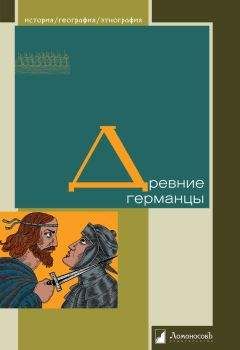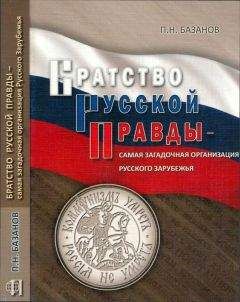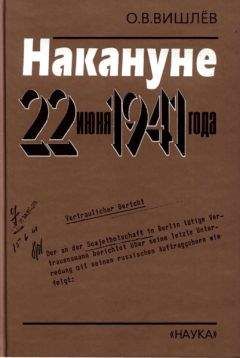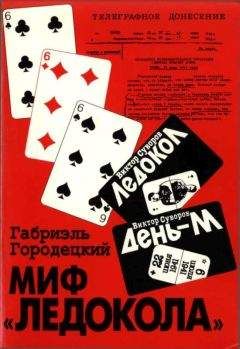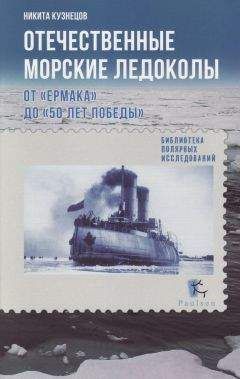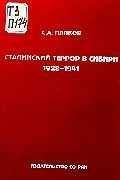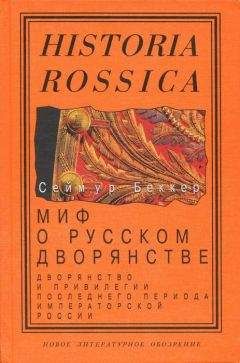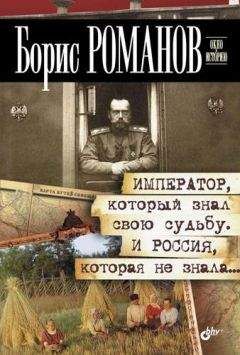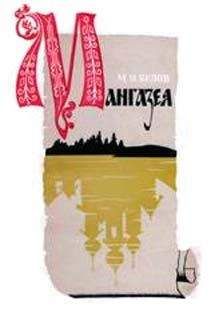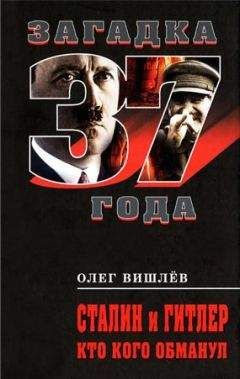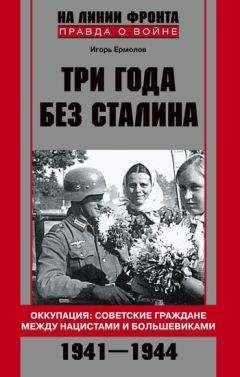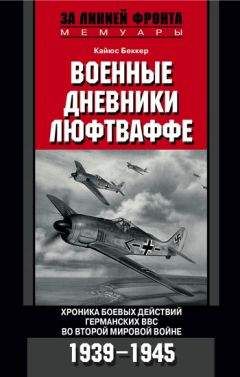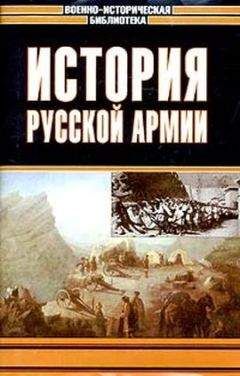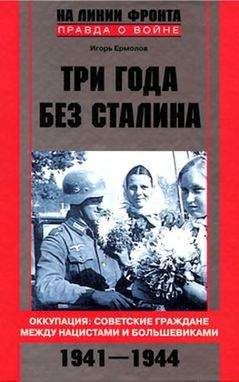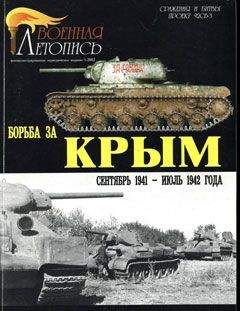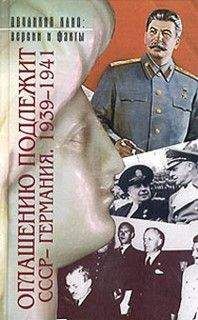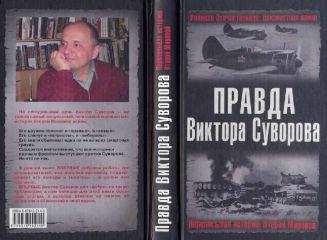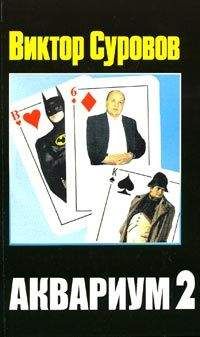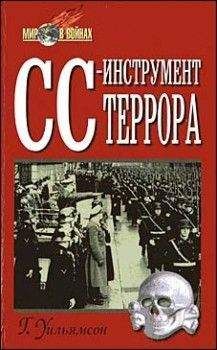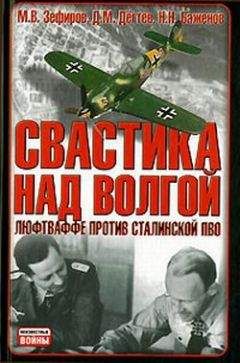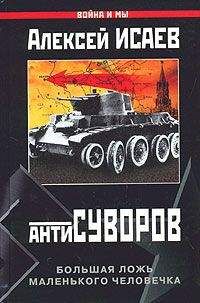Габриэль Городецкий - Роковой самообман
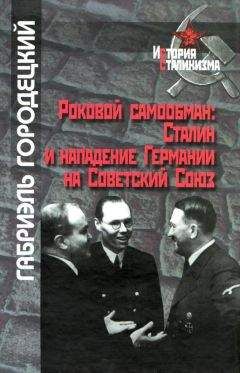
Скачивание начинается... Если скачивание не началось автоматически, пожалуйста нажмите на эту ссылку.
Жалоба
Напишите нам, и мы в срочном порядке примем меры.
Описание книги "Роковой самообман"
Описание и краткое содержание "Роковой самообман" читать бесплатно онлайн.
Опираясь на обширную источниковую базу, автор книги полемизирует со взглядами В.Суворова, высказанными в его книге «Ледокол». Обратившись к анализу сталинской политики накануне вторжения германских войск, он сосредотачивается на исследовании событий последнего предвоенного года.
Maser W. Der Wortbruch, Hitler, Stalin und der Zweite Weltkrieg. München, 1994.
Miller M.L. Bulgaria during the Second World War. Stanford, 1975.
Milstein M. According to Intelligence Reports… // New Times. 1990. № 26.
Miner S.M. Between Churchill and Stalin: The Soviet Union, Great Britain, and the Origins of the Grand Alliance. Chapel Hill, NC, 1988.
Moravec F. Master of Spies. London, 1975.
Murray W. Barbarossa // Quarterly Journal of Military History. 1992. Vol. 4. № 3.
Naveh S. In Pursuit of Military Excellence: The Evolution of Operational Theory. London, 1998.
Nekrich A.M. Pariahs, Partners, Predators: German-Soviet Relations, 1922–1941. New York, 1997.
Pietrow B. Deutschland im Juni 1941 — ein Opfer sowjetischer Aggression? // Geschichte und Gesellschaft. 1988. № 14.
Pons S. Stalin e la guerra inevitabile, 1936–1941. Torino, 1995.
Popovich N.B. Jugoslovensko-sovjetski odnosi u drugom svetskom ratu (1941–1945). Beograd, 1988.
Posen B.R. Competing Images of the Soviet Union // World Politics. 1987. July.
Post W. Unternehmen Barbarossa: Deutsche und sowjetische Angriffsplдne 1940–1941. Berlin, 1996.
Prange G.W. Target Tokyo: The Story of the Sorge Spy Ring. New York, 1984.
Prazmowska A. Britain, Poland and the Eastern Front, 1939. Cambridge, 1987.
Presseisen E. Prelude to «Barbarossa»: Germany and the Balkans, 1940–1941 // Journal of Modern History. 1960. № 4.
Raack R.C. Stalin Plans for World-War-II // Journal of Contemporary History. 1991. Vol. 26. № 2.
Raack R.C. Stalin's Drive to the West, 1938–1945: The Origins of the Cold War. Stanford, 1995.
Read A., Fisher D. The Deadly Embrace: Hitler, Stalin and the Nazi-Soviet Pact, 1939–1941. London, 1988.
Read A., Fisher D. Operation Lucy. London, 1980.
Reese R. The Impact of the Great Purge on the Red Army // The Soviet and Post-Soviet Review. 1992. Vol. 19. № 1–3.
Richardson С French Plans for Allied Attacks on the Caucasus Oil Fields January — April 1940 // French Historical Studies. 1973. Vol. 8. № 1.
Roberts С A. Planning for War: The Red Army and the Catastrophe of 1941 // Europe-Asia Studies. 1995. Vol. 47. № 8.
Roberts G. Military Disaster as a Function of Rational Political Calculation: Stalin and 22 June 1941 // Diplomacy and Statecraft. 1993. Vol. 4. № 2.
Roberts G. The Soviet Union and the Origins of the Second World War: Russo-German Relations and the Road to War, 1933–1941. London, 1995.
Roberts G. The Unholy Alliance: Stalin's Pact with Hitler. London, 1989.
Robertson E.M. Hitler Turns from the West to Russia, May — December 1940 // Paths to War: New Essays on the Origins of the Second World War / Ed. by R.Boys, E.M.Robertson. New York, 1989.
Rose N. Churchill: An Unruly Life. London, 1994.
Rossi A. The Russo-German Alliance, August 1939 — June 1941. London, 1959. Rotundo L. Stalin and the Outbreak of War in 1941 // Journal of Contemporary History. 1989. Vol. 24. № 2.
Rotundo L. War Plans and the 1941 Kremlin War Games // Journal of Strategic Studies. 1987. Vol. 10. № 1.
Rubin B. Istanbul Intrigues. New York, 1989
Schmidt P.O. Statist auf diplomatischer Bьhne 1923–1945: Erlebnisse des Chefdolmetschers im Auswдrtigen Amt mit den Staatsmдnnern Europas. Bonn, 1949.
Schmidt R.F. Der Hess-Flug und das Kabinett Churchill. Hitlers Stellvertreter im Kalk über britischen Kriegsdiplomatie Mai — Juni 1941 // Vierteljahrshefte für Zeitgeschichte. 1994. Bd. 42. № 1.
Schneider J. The Structure of Strategie Revolution: Total War and the Roots of the Soviet Warfare State. Novato, Calif., 1994.
Schwendemann H. German-Soviet Economic Relations at the Time of the Hitler-Stalin Pact 1939–1941 // Cahiers du Monde Russe. 1995. Sipols Via. Diplomatic Battles before World War II. Moscow, 1982.
Sonnleithner F., von. Als Diplomat im «Führerhauptquartier»: Aus dem Nach-lass. München, 1989.
Soviet Foreign Policy, 1917–1991: A Retrospective / Ed. by G.Gorodetsky. London, 1994.
Stafford D.A.T. SOE and Britisch Involvement in the Belgrade Coup d'Etat of March 1941 // Slavic Review. 1977. Vol. 36. № 3.
Stalin's Generals / Ed. by H.Shukman. London, 1993.
Stefanidis X. Greece, Bulgaria and the Approaching Tragedy, 1938–1941 // Balkan Studies. 1991. № 2.
Stolfi R.H.S. Barbarossa: German Grand Deception and the Achievement of Strategic and Tactical Surprise against the Soviet Union, 1940–1941 // Strategic Military Deception / Ed. by D.C.Daniel, K.L.Herbig. 1981.
Suny R. Making Sense of Stalin — Some Recent and No-So-Recent Biographies // Russian History — Histoire Russe. 1989. Vol. 16. № 4.
Suvorov V. Icebreaker: Who Started the Second World War. London, 1990.
Tarleton R.E. What Really Happened to the Stalin Line? // Journal of Soviet Military Studies. 1992. № 2. P. 187–219.
Thielenhaus M. Zwischen Anpassung und Widerstand. Deutsche Diplomaten 1938–1941: Die politischen Aktivitöten der Beamtengruppe um Ernst von Weizsäcker im Auswürtigen Amt. Paderborn, 1984.
Topitsch E. Stalin's War: A Radical New Theory of the Origins of the Second World War. New York, 1987.
Toscano M. Designs in Diplomacy. London, 1970.
Trepper L. The Great Game. London, 1977.
Tucker R. Stalin in Power: The Revolution from Above, 1928–1941. New York, 1990.
Tumarkin N. The Living and the Dead: The Rise and Fall of the Cult of World War II in Russia. New York, 1994.
Uldricks T. Evolving Soviet View of the Nazi-Soviet Pact // Labyrinth of Nationalism: Complexities of Diplomacy / Ed. by R.Frucht. Columbus, Ohio, 1992.
Uldricks T. Russia and Europe: Diplomacy, Revolution, and Economic Development in the 1920s // International History Review. 1979. № 1.
Uldricks T. Soviet Security Policy in the 1930s // Soviet Foreign Policy, 1917–1991: A Retrospective / Ed. by G.Gorodetsky. London, 1994.
Volkogonov D. Stalin: Triumph and Tragedy. London, 1992.
Waddington G.T. Ribbentrop and the Soviet Union 1937–1941 // Barbarossa: The Axis and the Allies / Ed. by J.Erickson, D.Dilks. Edinburgh, 1994.
Wark W.K. British Intelligence and Operation Barbarossa, 1941: The Failure of Foes // The Name of Intelligence: Essays in Honour of Walter Pforzheimer / Ed. by H.B.Peake, S.Halpern. Washington, DC, 1994.
Watt D.C. How War Came: The Immediate Origins of the Second World War, 1938–1939. London, 1989.
Weber F.G. Evasive Neutral: Germany, Britain and the Quest for a Turkish Alliance in the Second World War. Columbia, MO, 1979.
Weinberg G.L. The Foreign Policy of Hitler's Germany. 2 vols. Chicago, 1980.
Weinberg G.L. Germany and the Soviet Union, 1939–1941. Leiden, 1951.
Weinberg G.L. A World at Arms: A Global History of World War II. Cambridge, 1994.
Whaley B. Codeword Barbarossa. Cambridge, Mass., 1973.
Ziemke E.F. Stalin as a Strategist, 1940–1941 // Military Affairs. 1983. Vol. 47. № 47. P. 174–180.
Комментарии
1
Bell P.M.H. John Bull and the Bear: British Public Opinion, Foreign Policy and the Soviet Union, 1941–1945. London, 1990; см. также яркие примеры в работах: Hillgruber A. Hitlers Strategic Frankfurt, 1965. P. 105; Maury L. Stalin the Appeaser: Before 22 June, 1941 // Survey. 1970. № 76. P. 76. Подобные эпизоды выдвигаются на первое место в объемистом труде А.Рида и Д.Фишера «The Deadly Embrace: Hitler, Stalin and the Nazi-Soviet Pact, 1939–1941» (London, 1988). Они подкрепляют прежнее ложное толкование событий, по сути анекдотичное, руководствуясь заявлениями Молотова типа: «Дружба между народами Германии и Советского Союза, скрепленная кровью, имеет все шансы остаться прочной и нерушимой» (см. с. 426). На деле лишь 150 страниц объемистой книги относятся к периоду от подписания пакта до нападения на Советский Союз, и ни одна из них не основывается на советских источниках. Такая же картина предстает в: Nekrich A.M. Pariahs, Partners, Predators: German-Soviet Relations, 1922–1941. New York, 1997.
2
Suvorov V. Icebreaker: Who Started the Second World War. London, 1990. P. 327, 344–345. Примеры самой горячей поддержки его взглядов в России: Невежин В.А. Готовил ли Сталин наступательную войну против Гитлера? М., 1995; Его же. Синдром наступательной войны. М., 1997. Авторитетное противоположное мнение см.: Зюзин Е.И. Готовил ли СССР превентивный удар? // Военно-исторический журнал (Далее — ВИЖ). 1992. № 1; Горьков Ю.А. Готовил ли Сталин упреждающий удар против Гитлера в 1941 г. // Новая и новейшая история. 1993. № 3.
3
См., напр.: Was Stalin Really Planning to Attack Hitler in June 1941? // Journal of the Royal United Services Institute. 1986. Vol. 131. № 3. P. 19–30.
4
Миф «Ледокола»: накануне войны. М., 1995.
5
Наиболее ярко и захватывающе эта проблема представлена в кн.: Tumarkin N. The Living and the Dead: The Rise and Fall of the Cult of World War II in Russia. New York, 1994. Я взял на себя смелость воспроизвести некоторые ее положения в этом разделе.
6
Спор историков (нем.).
7
} Gillessen G. Der Krieg der Diktatoren: ein erstes Resьmee der Debatte ьber Hitlers Angriff im Osten // Frankfurter Allgemeine Zeitung. 1987. 25 Feb. Неудивительно, что именно эта газета стала подмостками для новой драмы, учитывая, кто является одним из ее издателей (с. 878). Схожие интерпретации ранее проходили практически незамеченными. См., напр.: Seraphim H. Die deutsch-russischen Beziehungen, 1939–1941. Hamburg, 1941. S. 38; Fabry P. Der Hitler-Stalin Pakt, 1939–1941. Darmstadt, 1962. S. 427–430. См. также глубокую критику в: Koch H. Hitler's Programme and the Genesis of.Operation Barbarossa // Historical Journal. 1983. Vol. 26. № 4.
8
«Vergangenheit, die nicht vergehen will» Нольте. Наибольший вклад в дебаты: «Historikerstreit»: Die Dokumentation der Kontroverse um die Einzigartigkeit der nationalsozialistischen Judenvernichtung. Mьnchen, 1987; Maser W. Der Wortbruch, Hitler, Stalin und der Zweite Weltkrieg. Mьnchen, 1994; Post W. Unternehmen Barbarossa: Deutsche und sowjetische Angriffsplдne 1940–1941. Berlin, 1996. Нольте косвенно способствовал недавнему появлению работ известных советологов, пытающихся поставить на одну доску сталинское уничтожение кулаков и гитлеровское Окончательное Решение; яркий пример: Conqьst R. The Harvest of Sorrow. New York, 1986. Явная политическая и идеологическая направленность дебатов объясняет, почему «Frankfurter Allgemeine Zeitung» и «Der Spiegel» терпели их ad nauseam{1452}. Работа Хоффмана «Красная Армия перед началом войны 1941 г.» опубликована в рамках официальной истории Германских Вооруженных Сил: Das Deutsche Reich und der Zweite Weltkrieg / Herausgegeben vom Militдrgeschichtlichen Forschungsamt. Bd. 4: Der Angriff auf die Sowjetunion. Stuttgart, 1983. Предубеждения и пристрастия Хоффмана отчетливо видны в его более ранней книге: Die Geschichte der Wlassow-Armee. Freiburg, 1984. См., в особенности, с. 307–308. Довольно критичный взгляд на толкование «Барбароссы» исследовательским центром см.: Berghahn. Das Militargeschichtliche Forschungsamt in Freiburg // Geschichte und Gesellschaft. 1988. № 14. Пространная обзорная статья в «Spiegel» (1996. № 6) посвящена изложению этих идей.
9
Topitsch E. Stalin's War: A Radical New Theory of the Origins of the Second World War. New York, 1987. См. обсуждение этого вопроса в моей работе: «Unternehmen Barbarossa»: Eine Auseinandersetzung mit der Legende vom deutschen Präventivschlag // Vierteljahrshefte für Zeitgeschichte. 1989. № 4. S. 645–673. См. также: Raack R.C. Stalin's Drive to the West, 1938–1945: The Origins of the Cold War. Stanford, 1995; Stalin Plans for World-War-II // Journal of Contemporary History. 1991. Vol. 26. № 2.
Подписывайтесь на наши страницы в социальных сетях.
Будьте в курсе последних книжных новинок, комментируйте, обсуждайте. Мы ждём Вас!
Похожие книги на "Роковой самообман"
Книги похожие на "Роковой самообман" читать онлайн или скачать бесплатно полные версии.
Мы рекомендуем Вам зарегистрироваться либо войти на сайт под своим именем.
Отзывы о "Габриэль Городецкий - Роковой самообман"
Отзывы читателей о книге "Роковой самообман", комментарии и мнения людей о произведении.





